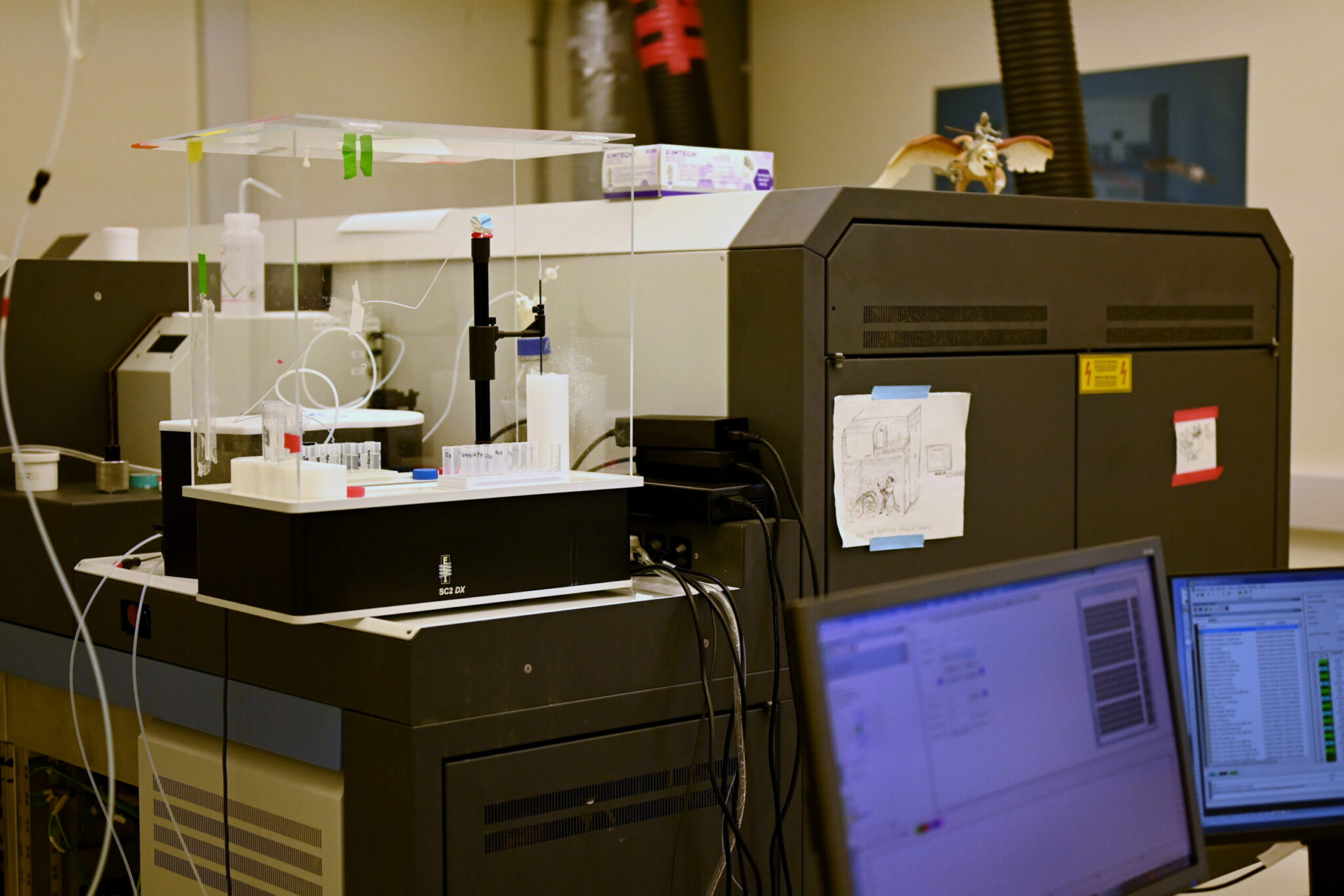Three Yale professors win 2023 Sloan Fellowship
Yale assistant professors Jing Yan, Lidya Tarhan and Roy Lederman have been honored in recognition of their performance as early-career scholars.

Linxi Cindy Zeng, Contributing Photographer
Yale’s assistant professors Jing Yan, Lidya Tarhan and Roy Lederman have each received a Sloan Research Fellowship in honor of their potential to become scientific leaders capable of revolutionizing their fields of study.
They are among 125 young researchers from 54 institutions across the United States and Canada who received the award for their achievements in February. The Sloan Research Fellowships are awarded in seven scientific and technical fields: chemistry, computer science, Earth system science, economics, mathematics, neuroscience and physics. Winners receive $75,000 in funding across two years to pursue research avenues of their own volition.
Both Tarhan and Yan emphasized the daily happiness and fulfillment brought by the research process and the steps, both small and large, that lead to breakthroughs.
“Science is an evergreen endeavor,” Tarhan said.
Lederman, assistant professor of statistics & data science and a member of the Quantitative Biology Institute and the Wu Tsai Institute at Yale, was awarded for his work in mathematics. His research interests range from the mathematics of data science to the imaging of molecules and the geometry of data, especially cryo-electron microscopy algorithms.
Mariam Alaverdian ’23 expressed that as an undergraduate student interested in academia, Lederman is one of the Yale faculty members in applied mathematics and statistics & data science that she looks up to. She described him as a very dedicated instructor who genuinely cares about students’ goals and research interests.
An assistant professor of molecular, cellular and developmental biology and yet another member of Yale’s Quantitative Biology Institute, Yan was awarded for his work in physics. His research lies at the interface between microbiology, molecular biology, physics and engineering, focusing on using multidisciplinary techniques to study biofilms, which are surface-attached bacterial communities embedded in an extracellular matrix. Dental plaque and bacterial films on shower curtains are examples of biofilms.
“Millions of bacterial cells form these biofilms,” Yan explained as he pulled out bacteria-shaped plush toys. “The questions we ask are, how do they self-assemble in this process? How do they build this three-dimensional architecture cell by cell? What are the molecules they secrete, and how do they physically interact with each other?”
Benny Tai, a postdoctoral research fellow under Yan, further elaborated on cells’ quorum-sensing ability and the role heterogeneity and diversity play in a community.
Yan’s lab members shared that on top of balancing all of his teaching, lab-running and administrative responsibilities, they could still catch Yan doing hands-on experiments and training in the lab in his free time because he “enjoys it.”
The strongest impression Yan’s doctoral student Xin Huang GRD ’25 had of Yan was that he was “supportive.” His postdoctoral researcher Merrill Asp pointed out that Yan was constantly full of creative ideas and always made time for his students, calling him “someone you could sit down with and really plan something with.”
While interdisciplinary research has been on the rise, Yan said that the traditional approach of focusing on one discipline should not be deemphasized.
“Nature knows no boundaries,” Yan said, quoting his doctorate advisor Steve Granick. “We set those boundaries to create departments. But if you ask cells, they do not care.”
Lidya Tarhan’s fellowship was awarded in Earth system science. Her team also takes a very multidisciplinary approach in tackling some of the biggest remaining questions about how our planet works. In particular, their research focuses on how the emergence of different groups of organisms have shaped the environments they inhabit and how changes in environments on Earth over geologic time have paved the way for the radiation of groups like animals.
According to Tarhan, comparisons of natural and experimental systems, such as fossil archives and lab results, enable further interrogation into how the modern world developed, including the origins and impacts of the earliest animals.
“We’ve always wondered, as Earth scientists, about origins and evolutionary trajectories,” Tarhan said. “These are timeless questions. But the ways we can go about tackling them are constantly evolving, making these big questions more tractable than before.”
Her lab capitalizes on the employment of new tools developing in both Earth sciences and other disciplines to address ageless and newly emerging questions.
“Lidya is super open to conversations and new ideas,” said Tarhan’s postdoctoral researcher Jiuyuan Wang. “Once you get to know her personality and her passion for research … everybody loves Lidya.”
Tarhan encouraged undergraduate students interested in research to reach out to faculty for research opportunities. She noted that, as a professor, the great advantages of a place like Yale are not only the tremendous opportunities offered by interactions with faculty colleagues and postdoctoral researchers, but also the phenomenal students whose talent and creativity play a pivotal role in tackling profound and exciting research questions.
All three Sloan Fellows are each teaching one undergraduate course this semester.







